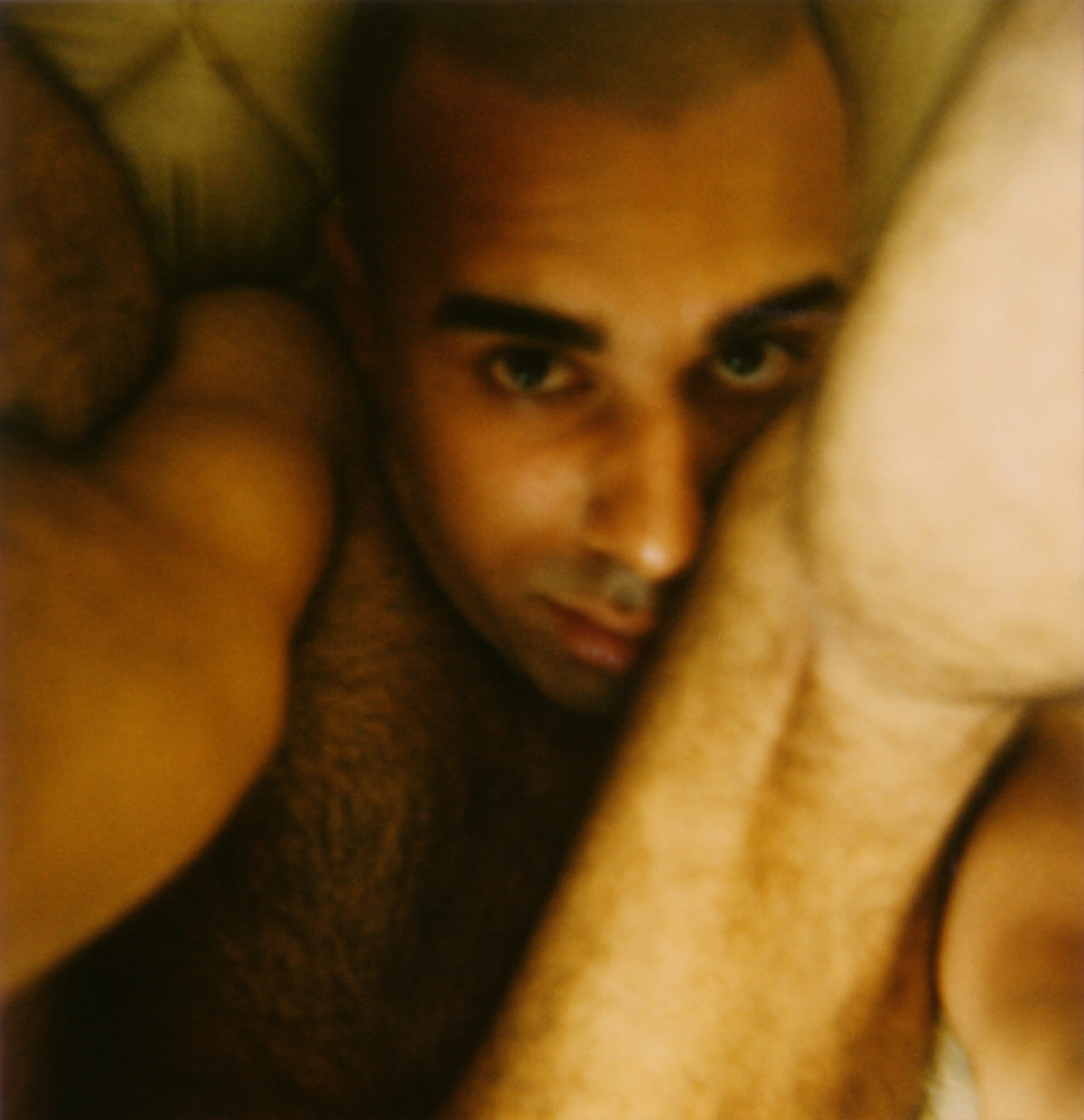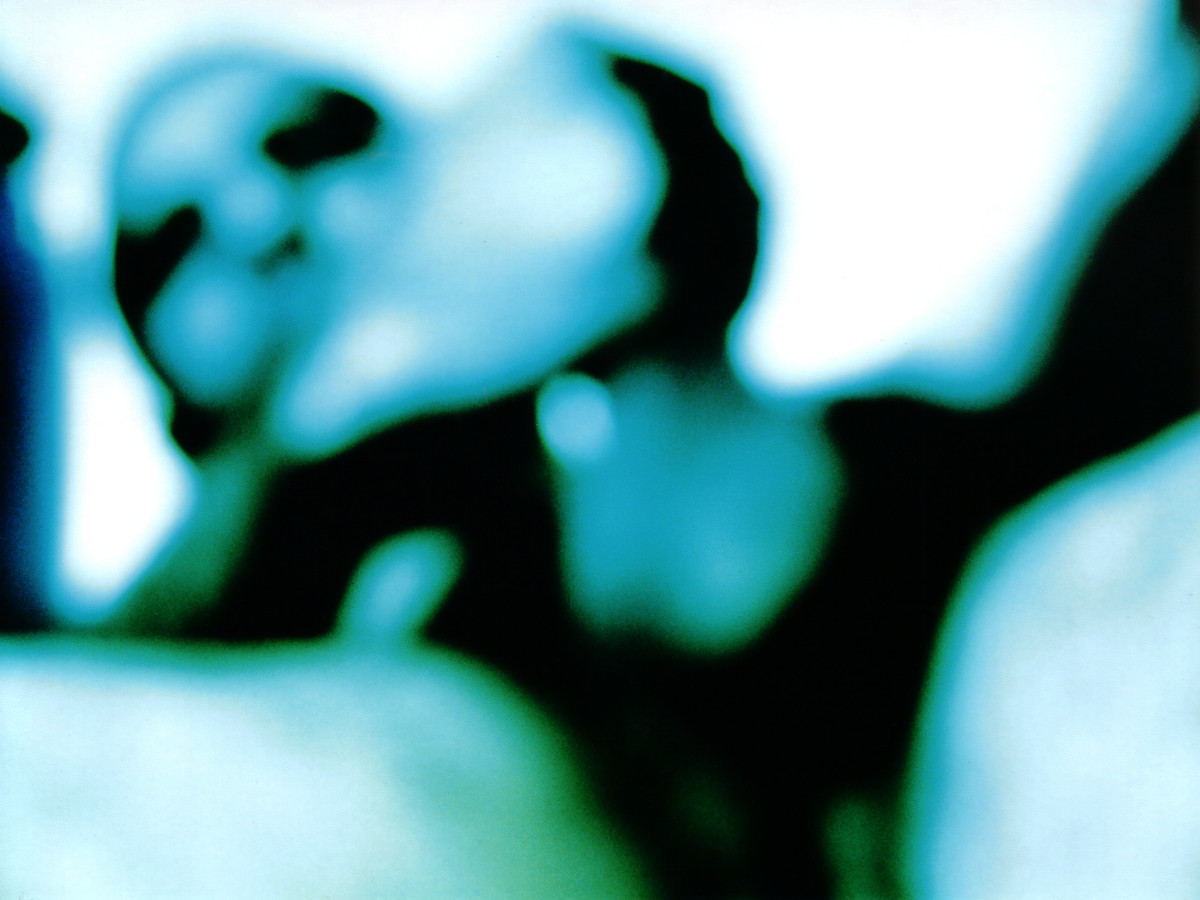 José Da Silva, Waiting to Cruise the Performative, 2001
José Da Silva, Waiting to Cruise the Performative, 2001Published first in 1989, Linda Williams’ landmark book Hard Core, introduced into the academy a field of ‘porn studies’ that was predominantly centred around heterosexual and pre-digital porn. In the 1999 edition, an epilogue acknowledges new porn developments worthy of study: home video, early virtual, performance art, upscale yuppie, gonzo fetish, ‘new’ gay, ‘real’ lesbian, and amateur pornographies.
Williams describes the last category as a ‘downscale’ one ‘in which (presumably) ordinary folks exchange video-taped sexual performance.
One instance where this ‘blurring of difference’ occurs is in The Bait Bus, a US porn-site which depicts straight men being lured into a vehicle by the (false) promise of sex with a busty female porn vixen.
The Bait Bus maintains itself as gay porn (about and including ‘straights’) by disregarding its potential for violence and risk. In this case, the ‘bait’ is stripped of its connotations of hooked entrapment and replaced with a ‘tease’ for virtual gay audiences. The gay consumer is teased into a frenzy of autoerotic action culminating with the spectator’s own money shot – a reminder of the money paid for the one-way bus ride of much contemporary gay porn.
This essay will examine the work of José Da Silva, a young Brisbane artist whose work explores the way pornographic images and acts of violence shape gay male subjectivity. Da Silva underscores the way sexual violence is repeatedly fetishised and performed in gay porn, and by extension queer culture. Da Silva’s work is bait, designed to lure an audience with its amateur porn pull. Once captive, an audience finds itself figuratively trapped in a seedy back room where sexual violence is not simply patterned on recognisable social problems like homo hate crimes and/or gay male domestic violence.
This is a backroom where deviance and perversion run rife; on a good night you might find remnants of Da Silva’s visual practice being fisted by its own compulsion to intersect violence, alienation and love. Da Silva’s work surfs the endless pornographic image stream, reacting against the way contemporary gay imagery has been tamed into a ‘safe place’ where flaccid, talk show host dogma of empowerment becomes the norm. Instead of empowerment, Da Silva documents and ultimately undermines the manner by which the consumption of porn and violence depend for meaning on the enforced ‘powerlessness’ of the ‘captive body’.
Hortense Spillers writes about the African-American slave body as a ‘captive body’ denied subjectivity, reduced to a thing, ‘the source of an irresistible, destructive sensuality’. In ‘becoming being for the captor’, Spillers argues that ‘the captive body translates into a potential for pornotroping and embodies sheer physical powerlessness that slides into a more general “powerlessness”.’
Da Silva’s work reveals similar conditions in its depiction of the captive body and its potential for pornotroping.
 José Da Silva, Learning to Enjoy Being Fucked, 2003
José Da Silva, Learning to Enjoy Being Fucked, 2003In his self-portrait Polaroid series Learning to Enjoy Being Fucked (2003) Da Silva documents himself lying back to mattress, legs bent and raised. Somewhere past the frame his ass is ‘bottom’ to a ‘top’ we never see. Warhol’s film Blow Job (1964) comes to mind as another moment when the ‘action’ is off screen. The difference, of course, is that Da Silva’s facial expressions are a perverse peep show of trauma, pain, and eventual resignation – a contrast to the rapturous facial tics of Warhol’s blown beefcake.
Gay porn perpetuates the myth that gay men who play ‘bad-assed bitch’ to a ‘motor-cocked butch’ are hungry orifices who always already enjoy being repeatedly, desperately gang banged. Apparently, the gay anus can’t get no satisfaction. One must take it like a man. In Da Silva’s world, gay penetration is traumatic – a lesson or process – and never a pleasure innate. One must learn the ropes, or otherwise resort to a measure of Warholian distraction.
The frame of each Polaroid stands in for the POV of his topheavy assailant even though Da Silva holds the camera and shoots. Da Silva looks at himself in the reflection of the camera lens as he learns to ‘enjoy being fucked’. The tight cropping enhances the allusions to rectal tightness, while the nauseainducing framing elicits a reversal of positions: when looking at the images head on, Da Silva appears pinned to a padded ceiling – a bottom rising to the top.
Da Silva’s work is a pornotroping of the captive body. He immerses himself in the codes of pornography so that these meanings might be extended figuratively. The artist’s own body is captive to the implied presence of the captor, the one who fucks. Removed from the action, a viewer is similarly captor, caught looking at these seemingly private Polaroids. But the viewer is only rendered captor after the artist has captured his own freeze-framed captivity. By documenting the trauma imbedded in ‘learning to enjoy being fucked’, Da Silva resists easily identifiable positions of subject and object, captor and captive, bottom and top.
Da Silva claims that he uses Polaroids to ‘foreground the public dimension of private experience and to propagate attempts to localise myself within a pornographic imagination’.
The effect is unsettling because the usual exchange in this context would be digital images capitalising on a user’s sexual credentials. Body parts are fetishised, tumescence is privileged, and erotic posturing the key in such digital bait. Da Silva exchanges online digitally scanned Polaroids in an attempt to disrupt the conventions and expectations demanded by these web-based (cock) rings.
As bait Da Silva’s images may never attract connection to another. It’s a strategy counter to the way Warhol used Polaroids to mediate his own connection between voyeuristic self and erotic captive other: ‘Whenever somebody came up to the Factory [in 1969], no matter how straight-looking he was, I’d ask him to take his pants off so I could photograph his cock and balls. It was surprising who let me and who wouldn’t’.
The surprising feature here is that Da Silva captures and disseminates his own captive body, all the while fetishising trauma over arousal. A mindfuck excluding bodily intimacies, Da Silva’s Polaroids are pornotropes circulating in pornographic contexts.
 José Da Silva, Untitled (Watching Unter Männern), 2004
José Da Silva, Untitled (Watching Unter Männern), 2004Other recent self-portraits by Da Silva also toy with the idea of ‘becoming being for the captor’, caught looking at oneself while being watched by another. In his Type C photographs, Untitled (Watching Unter Männern) (2004), Da Silva documents himself masturbating to a German porno Unter Männern. which translates to Among Men.
As porn consumer/viewer, the artist becomes pornographic spectacle, the frame of the image replicating the shape of the TV screen. As viewers we watch him watching us, a dynamic that places this exchange of artist, viewer and the implied German porno into a configuration of circle jerks. The colour reversal process applied to the image transforms the act of watching yourself watching porn into a simulacrum, denied the kind of image clarity necessary for maximum arousal.
Da Silva applies the same cockteasing technique to Untitled (Soldiers) (2004). In this series of two images, Da Silva manipulates a found internet image of seven British soldiers showering naked in the Iraqi desert. The soldiers appear like melting figures whose naked asses form a line readymade for voyeuristic target practice on the part of the spectator.
 José Da Silva, Untitled (Soldiers), 2004
José Da Silva, Untitled (Soldiers), 2004Captive to their newly inscribed homosociality, these men could be masturbating in a group or engaged in a macho pissing contest. Do they gaze straight ahead or cruise each other’s cocks? A tenuous suggestion of violence is evoked because we can assume that if born bs are not being detonated, the eruption of homo panic could occur at any moment for this group of showering soldiers.
A more intimate scene of bathing features in Da Silva’s video installation Waiting to Cruise the Performative (2001). Responding laterally to the complex politics underpinning the phenomenon of homo hate crimes. this video features the artist being washed by a white man in a shower cubicle. The camera is static, while both figures assume various positions to facilitate a ritualistic cleansing.
Initially the scene is tender as if a pre- or post-coital clean-up is taking place. Over time, the washing becomes almost unbearably clinical and invasive, with the handling of the genitals and anus becoming potentially abusive. Jean-Leon Gerome’s Orientalist bath house imagery is recalled in the way it features someone being washed by another of the same sex. For example, Gerome’s Moorish Bath (Lady of Cairo Bathing) (1870) features a luminous white mistress who is about to be washed by a dark-skinned slave. Orientalism scholar Susan Aykut has noted that such eroticised inter-racial couplings between women speak to 19th century accounts of lesbian relationships occurring in bath house environments.’
Being washed in Da Silva’s universe has none of the exotic fascination inspired by Orientalist scenes featuring similar content. The setting could be a gay bath house or sauna, especially in the sense that its voyeuristic intrusiveness draws from the conventions of gay porn where bath house settings are commonplace.
Any moment we expect the washing to cease, a fuck scene to begin. But it never does, and as the scene is drawn out, it becomes clear that any ensuing sex would be similarly detached, ritualistic and perhaps littered with perversions we never counted on witnessing.
When the video was exhibited at the Institute of Modern Art in 2001, an angry member of the public alerted police to the ‘pornographic’ exhibit. During the same period, the neighbouring girls’ school prohibited students from attending the IMA for the duration of the exhibition.’
While Da Silva’s work engages directly with the meanings we make of contemporary gay porn, the offended patrons of the IMA mistook the pornotropic nature of Da Silva’s video for the pornographic. Pornotroping is central to Da Silva’s practice because he strategically depicts gay captive bodies within a discourse that attempts to silence gay male subjectivity.
Capturing the body as powerless and passive, Da Silva turns that very powerlessness on its head by complicating the way we look at ourselves looking at sex. Subjected to a fetishised fascination or a lurking threat of violence, Da Silva’s work baits straights, spotlights hate, providing a much needed intervention into the increasingly dull state of much contemporary queer visual culture.
- Linda Williams. Hard Core: Power, Pleasure and the “Frenzy of the Visible” University of California Press. Berkeley 1989 (1999 edition). p. 303.
- ibid, p. 336, n. 37.
- The Bait Bus, established in 2002
- Hortense J. Spillers, ‘Mama’s Baby, Papa’s Maybe: An American Grammar Book’, Diacritics, Summer 1987, p. 67.
- Pornotroping turns the subject of the gaze into an object produced/or sexual arousal, in a figurative sense. See Spillers, p. 67.
- José Da Silva, email to the author, 5 February 2004.
- Andy Warhol and Pat Hackett. POPism: The Warhol ‘60s. Pimlico, London 1980, p. 294.
- Susan Aykut. ‘Jean-Léon Gérôme’, Orientalism: Delacroix to Klee, Art Gallery of NSW, Sydney 1997, p. 100.
- Jennifer Dudley. ‘Gay Art Leaves Girls’ School Cold’, Courier Mail, Brisbane Wed March 7, 2001.
Essay for Artlink, guest edited by Helen Grace.
Published by Artlink, issue 24:2 in 2004.